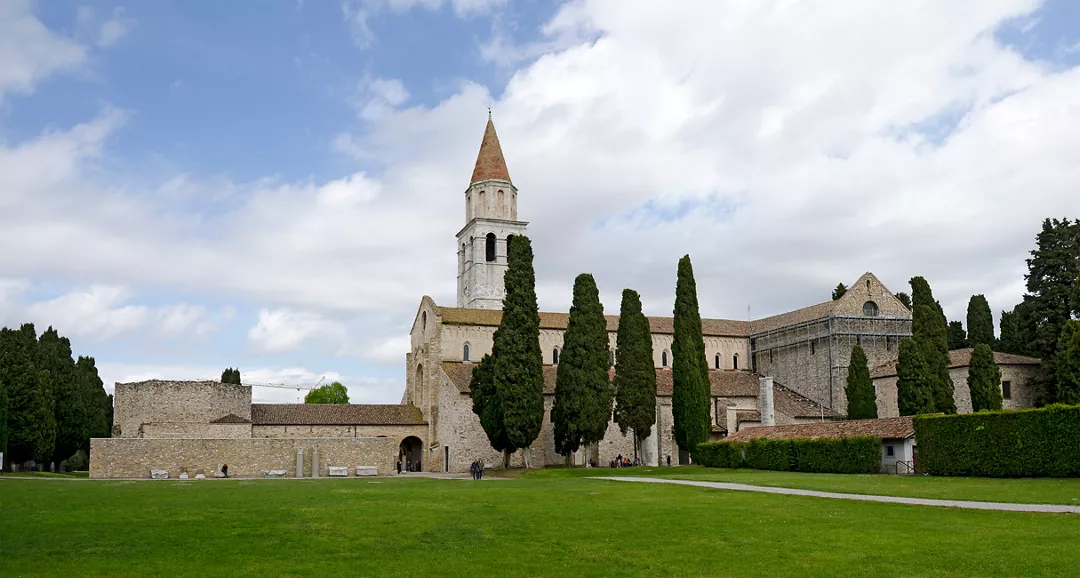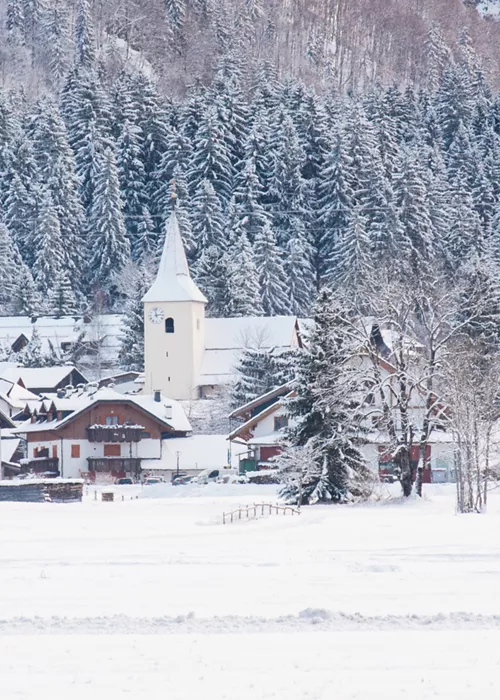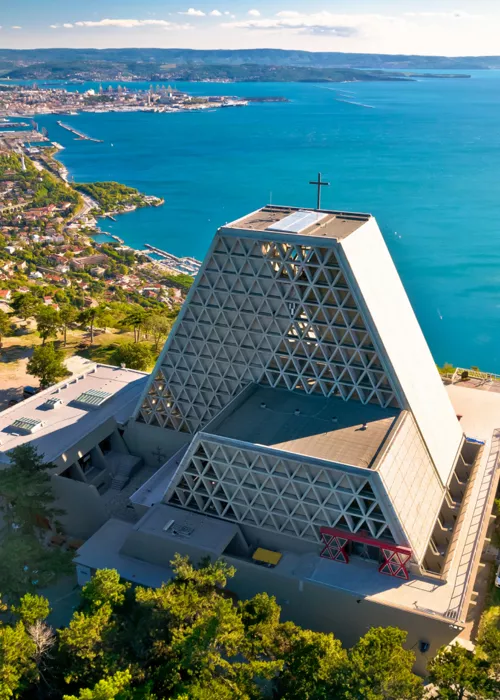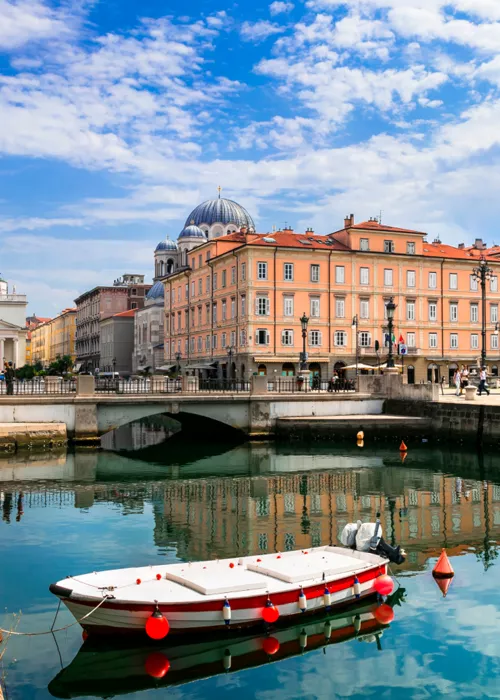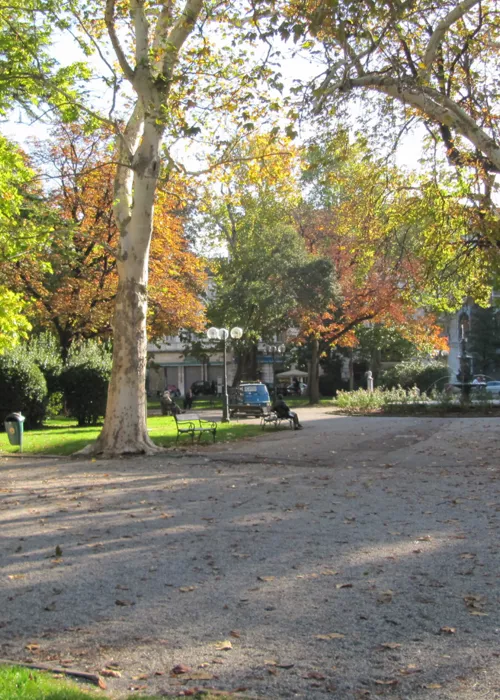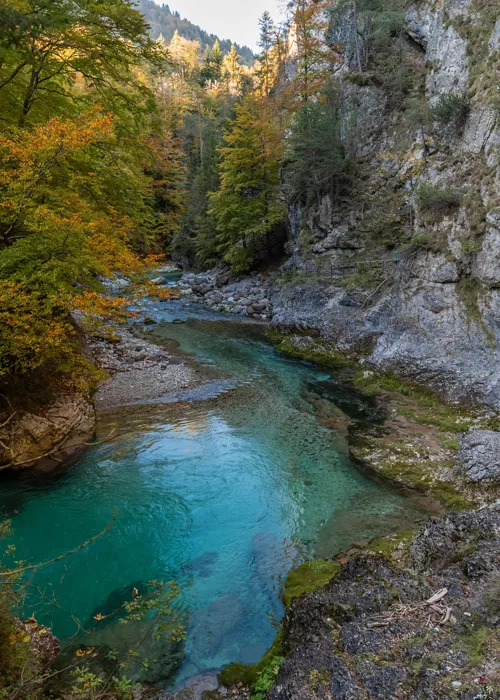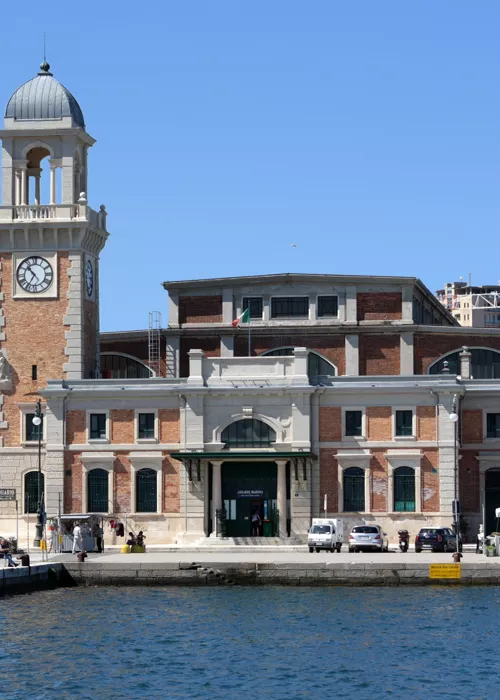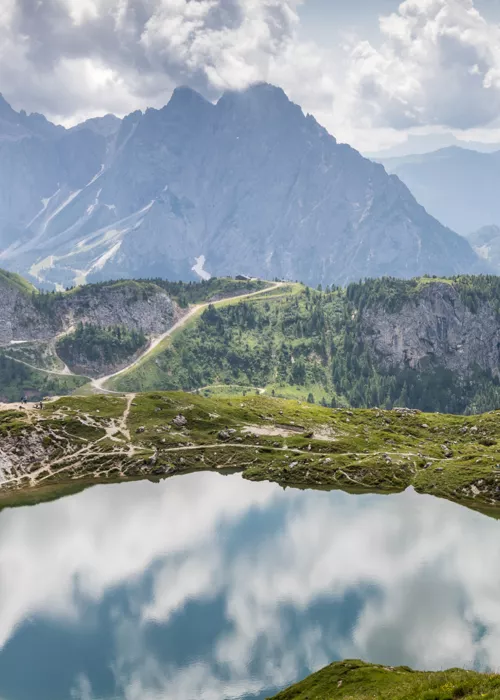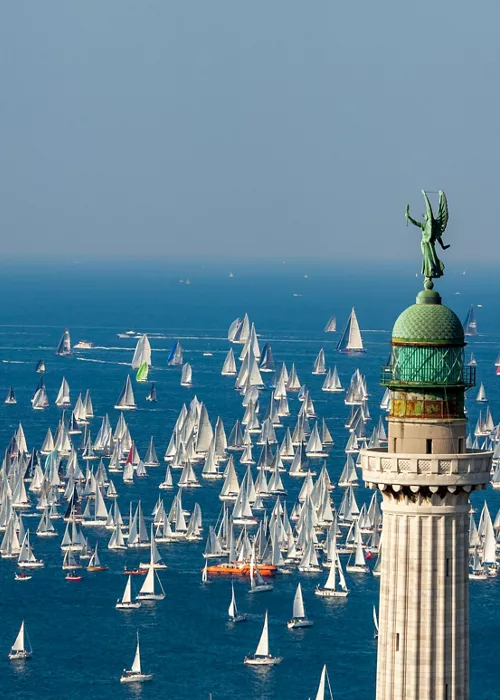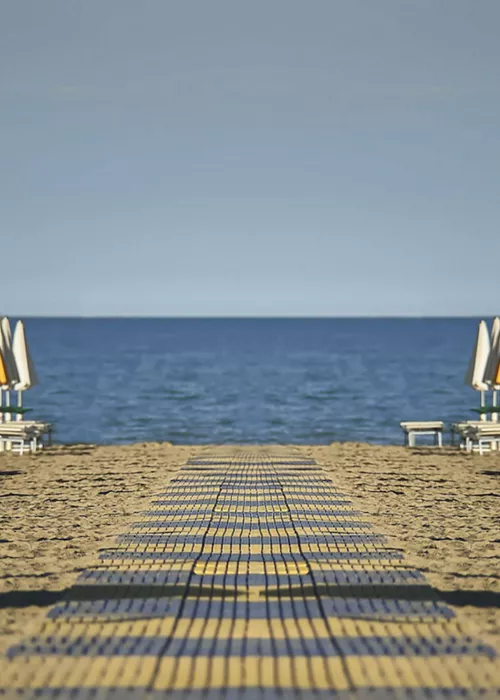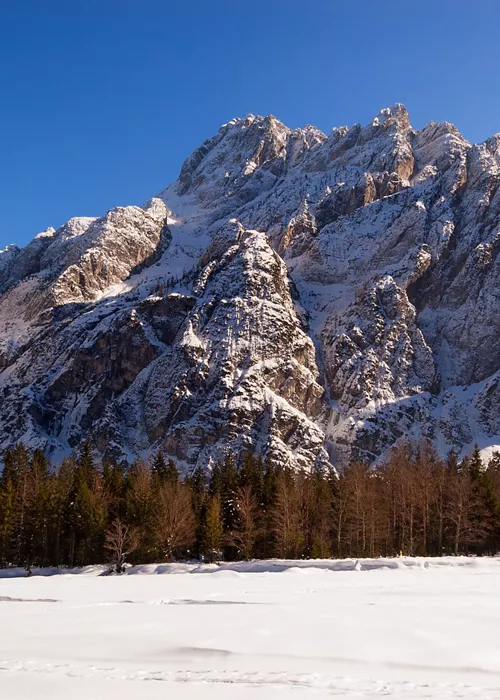Aquileia, the Ruins and the Basilica
4 minutes
An ancient metropolis of the Roman Empire and later the main centre for the spread of Christianity in northern and eastern Europe, Aquileia today offers a unique and enthralling sightseeing experience.
The extent of its archaeological area and the importance of the role played by its Patriarchal Basilica are the reasons for its inclusion in the UNESCO World Heritage List.
History and curiosities
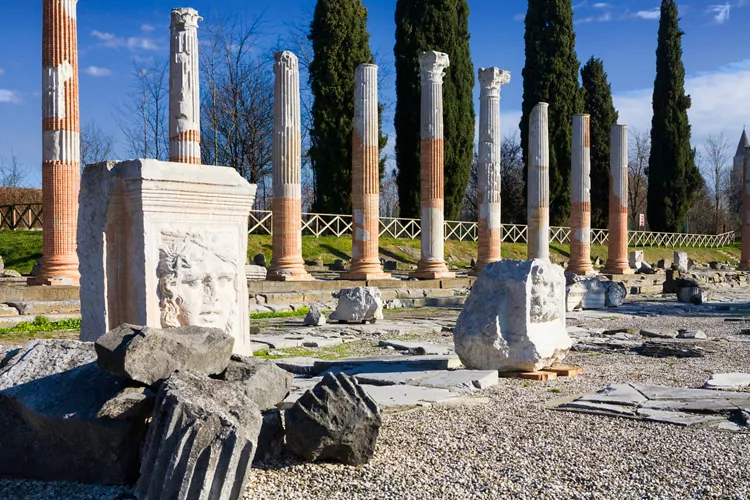
Founded in 181 B.C. for defensive and commercial purposes, Aquileia soon became one of the main ports on the Adriatic Sea and, as a consequence, also a great cosmopolitan city and crossroads of religions and cultures. It became an episcopal see even before the end of the Western Roman Empire: its bishop was also patriarch and for centuries the Church of Aquileia, which enjoyed substantial autonomy from that of Rome, played a fundamental role in the spread of Christianity, acting as a meeting point between the Balkan area, Central and Eastern Europe and the Mediterranean. The Patriarch, at the head of a diocese extending from Canton Ticino to Hungary, also obtained feudal investiture over the territory of Friuli in 1077. Thus, the Patriarchate of Aquileia became a German-style ecclesiastical principality and remained so until its conquest by the Venetian Republic in 1420.
Over the centuries, Aquileia's charm has captured historians and writers. The first, of course, are the ancients: Titus Livius, Strabo, Tacitus, Herodianus tell of its foundation, of the Roman emperors who stayed there repeatedly, of the sieges to which it was subjected. The siege of 452 by Attila, to whom an opera by Giuseppe Verdi is dedicated, remains in legend. And it was in the midst of this siege that the inventor of a time machine, protagonist of a story by Nat Schachner (Ancestral voices), found himself. Having survived sieges and even the Empire, Aquileia retained its charisma over the centuries and inspired other writers, from those closest to it such as Elio Bartolini (Racconti aquileiesi) to those as far away as Jorge Luis Borges (The Theologians). Finally, let us not forget one of its most famous citizens, Francesco Tullio-Altan, author of Pimpa and Cipputi.
What to see in Aquileia: places not to be missed

You can retrace Aquileia's thousand-year history through some of the city's landmarks. Start from the ancient Roman city, located close to the city centre. There, in the open air and with free admission, is the archaeological area where you can walk to see the remains of the Roman forum, the river port, and the late antique markets. You can walk to the Roman burial ground and visit several domus, including that of Titus Macro, one of the largest Roman dwellings found in northern Italy. You should dedicate a few hours of your time to the National Archaeological Museum, organised in a modern exhibition itinerary that takes the visitor on a discovery of the ancient Roman metropolis, its daily life, production and commercial activities.
The links of ancient Aquileia with the rest of the Mediterranean are also documented in the other national museum, the Palaeo-Christian: it exhibits the mosaic remains of ancient basilicas and a surprising collection of funerary stelae that help describe the composite Aquileian society of the 4th and 5th centuries.
However, the largest and most admired monument of ancient Aquileia remains its Basilica, which preserves a spectacular floor mosaic, the largest in the Western Christian world, commissioned by Bishop Theodore immediately after the Edict of Constantine in 313 AD. In addition to the present basilica, the worship complex also included another hall, which today corresponds to the so-called excavation crypt: some of the surviving mosaics, visible around the foundations of the bell tower built at the beginning of the 11th century, are particularly accurate and still mysterious in their symbolism.
With a single ticket, you can also visit the Episcopal Palace, the Baptistery and the Südhalle, whose valuable floor mosaic from the 4th - 5th century has been placed in a protective structure that guarantees its view and preservation. This mosaic, which is of particular historical and artistic value, is added to the collection of Roman and early Christian mosaic floors that make Aquileia the Roman mosaic capital of the West.
More ideas on what to do in Aquileia

To complete your visit to the city, you can also enjoy some other activities, such as:
1. Climb the bell tower: it is more than 70 metres high and provides an amazing view of the entire city and the surrounding plain. Visits to the bell tower are only allowed at certain times of the year, usually between April and September.
2. Exploring the surroundings by bicycle: if you head north-west, you will find yourself in a flat, geometric countryside, the result of land reclamation ordered by Empress Maria Theresa of Austria in 1762. Once you reach the embankment, you can admire the lagoon in all its beauty. If you prefer to proceed southwards on the Alpe Adria cycle route, you will arrive in Grado. On the return journey you can also use the boat service that allows you to transport your bike. For those who do not have their bikes with them, there is a rental service in Aquileia.
3. Take part in a guided tour: there is something for all tastes, historical, naturalistic, food and wine, suitable for families. If you prefer to move around independently, hire an audio guide at the infopoint.
4. Taste the local wines: Aquileia also gives its name to one of Friuli Venezia Giulia's prized DOC zones. On the other hand, wine has been present in Aquileia since its origins: mosaics and numerous finds of amphorae and mugs witness to this.
Nearby
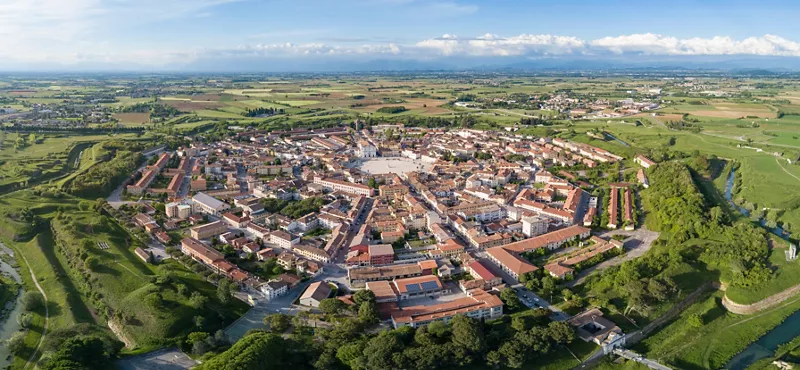
During your stay in the Bassa Friulana, don’t miss the chance to visit the nearby UNESCO World Heritage Sites of Palmanova and Cividale del Friuli, both just a short distance from Aquileia.

